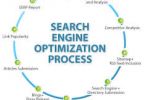In a do-it-now and get-it-right business environment, professionals in many different industries are straining under increasingly limited resources. Figuring out how to communicate with other departments and leverage already-available knowledge and materials can make a world of difference to business profitability — and human sanity in the maxed-out modern workplace. But anyone working in an enterprise company knows this is far easier said than done, especially if you’re a marketing or PR pro trying to work with an analytics team to figure out how to use big data and leverage consumer insights to improve your deliverables.
To get up to speed on the basics of big data analytics and explore ways for marketing and communication teams to boost internal coordination, efficiencies and profitability, download “Be A Big Data Marketing Hero,” an ebook that includes actionable ways for you to improve the quality of your company’s cross-team communication.
The ebook suggests that one of the first steps to breaking down silos, bridging the knowledge divide and forging alliances with other teams to accomplish shared — instead of department-specific — goals is to start speaking the same language. Here are five common terms related to the challenges and opportunities of data-driven marketing; discuss them with your team and others to establish a shared vocabulary related to big data analytics:
· Volume: The always-on, real-time and sharable digital marketplace generates an enormous amount of information about customers. Filtering the vital insights from this massive collection of data requires a firm understanding of your goals, metrics and go-forwards.
· Velocity: Customer feedback, buying behavior data and other types of information are available almost instantaneously, and modern consumers have come to expect immediate responses and transactions — around the clock. Delivering on this expectation is non-negotiable in many types of businesses.
· Variety: Consumer data is now available from many sources, including traditional sales reports and market analysis, as well as GPS-location programs, social media feeds and more. Only companies that can find a way to store and process the many different types of information can fully leverage the information they have about customers.
· Veracity: Trust in the accuracy of information makes a big difference in how much decision-makers allow data to guide business strategy. To ensure that objective data, and not intuition and guesses, are driving business decisions, it helps to be clear about where information is coming from as well as how and why it’s being collected.
· Value: Even a large amount of the most credible and timely customer data is essentially worthless if it doesn’t provide relevant information. Staying focused on what you really need to know can help you avoid the paralysis that comes with information overload and achieve genuine data-driven solutions to build strong and mutually valuable relationships with customers.























